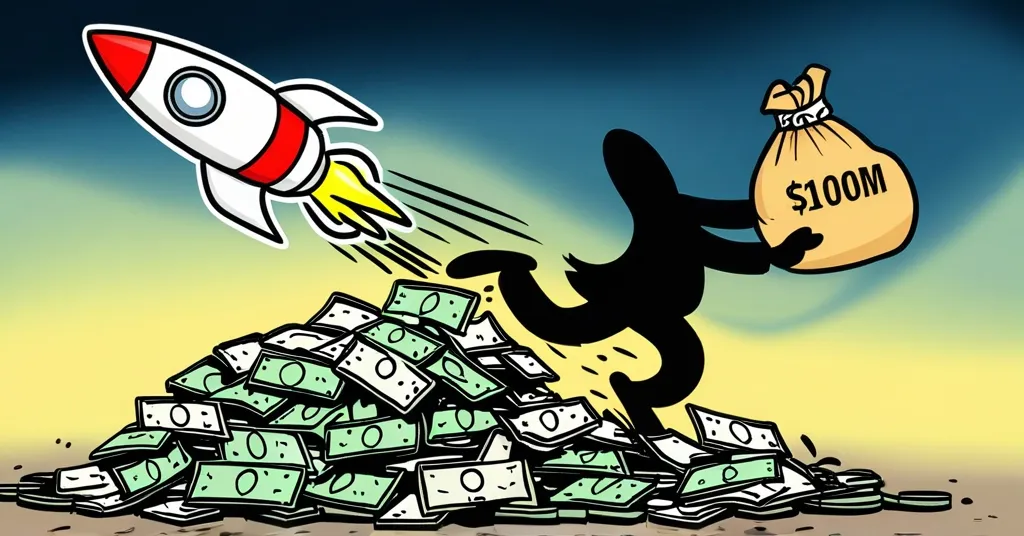Argentinian President’s Libra Memecoin Endorsement Leads to $100M+ Rug Pull Disaster

Argentinian President’s Endorsement of Libra Memecoin Ends in $100 Million+ Rug Pull
What happens when a country’s president endorses a cryptocurrency that turns out to be a massive scam? In Argentina, President Javier Milei’s promotion of the Libra memecoin led to a meteoric rise and a catastrophic fall, leaving investors with a 95% loss.
- Javier Milei promotes Libra memecoin
- Libra aims to support Argentine small businesses
- Token value surges then crashes 95%
- Insiders sell $107 million in apparent rug pull
- Milei distances himself from project
The Promise of Libra
The Libra memecoin was launched with the promise of bolstering small businesses and startups in Argentina, a country facing significant economic challenges. Memecoins, cryptocurrencies inspired by internet memes or cultural trends, often lack intrinsic value but can gain traction through hype. President Javier Milei, a self-proclaimed libertarian and advocate for cryptocurrencies, endorsed Libra on social media, describing it as “
A private project [that] will dedicated to encouraging the growth of the Argentine economy by funding small Argentine businesses and startups.
” His endorsement sent the token’s value soaring, reaching a market cap of $4.4 billion, or the total value of all Libra tokens combined.
Milei’s political stance, which aligns with a broader movement towards decentralization and economic freedom, likely fueled his support for the project. His vision for Argentina’s economic revival through innovative financial technologies seemed to resonate with many, especially in a nation seeking alternatives to traditional financial systems.
The Crash and Burn
However, the euphoria was short-lived. A rug pull, a scam where developers abandon a project and run away with investors’ money, was executed by a small group of insiders holding 82% of the tokens. They sold off $107 million worth of Libra, causing the token’s value to plummet by 95%. This dramatic fall from grace highlights the volatile nature of memecoins and the risks associated with insider concentration.
The Libra crash didn’t just take a nosedive; it plummeted from the stratosphere to the ground floor. This incident, known as a rug pull, is a stark reminder of the pitfalls in the crypto world, where the promise of quick gains can often lead to significant losses.
Political Fallout
In the aftermath, President Milei quickly distanced himself from the project. He deleted his promotional tweet and issued a statement saying, “
I was not aware of the details of the project and after having become aware of it I decided not to continue spreading the word (that is why I deleted the tweet).
” His response underscores the political and economic implications of the scandal, with criminal fraud charges now filed against him and calls for his impeachment from opposition lawmakers.
The fallout from the Libra crash could erode public trust in the government and impact Milei’s anti-corruption agenda. It’s a reminder that in the world of crypto, even a president’s endorsement can’t shield a project from the harsh realities of scams and market manipulation.
Comparative Analysis
The Libra incident is not an isolated case. It follows a disturbing trend of celebrity-endorsed memecoins, such as those launched by former US President Donald Trump and First Lady Melania Trump, which have also experienced significant volatility and investor losses. The involvement of Arunkumar Sugadevan, linked to multiple fraudulent memecoin projects like MELANIA, ENRON, and OG FUN, further reveals a pattern of serial scams in the space.
These incidents highlight a broader issue in the memecoin market: the allure of celebrity endorsements can draw investors into projects that lack substance and are prone to manipulation. It’s a cautionary tale for anyone looking to ride the memecoin wave.
Lessons for Investors
For investors, the Libra crash is a painful lesson in the importance of due diligence and skepticism towards celebrity endorsements. To protect against rug pulls and other crypto scams, it’s crucial to:
- Conduct thorough research on the project’s team, tokenomics, and community.
- Beware of tokens with high insider concentration, as seen with Libra.
- Approach celebrity endorsements with caution, understanding that they don’t guarantee a project’s legitimacy.
The broader cryptocurrency community must prioritize education to mitigate future scams and protect investors. As the crypto world continues to evolve, the need for vigilance and understanding of the risks involved becomes increasingly apparent.
Key Takeaways and Questions
- What was the initial purpose of the Libra memecoin?
The Libra memecoin was intended to encourage the growth of the Argentine economy by funding small businesses and startups.
- How did the insiders’ actions affect the Libra token?
Insiders sold off $107 million worth of tokens, causing the token’s value to crash by 95%.
- What was President Javier Milei’s response to the Libra memecoin crash?
Milei deleted his tweet promoting the project and claimed he was unaware of its details, stating he decided not to continue spreading the word about it.
- What percentage of Libra tokens were held by insiders?
Approximately 82% of the tokens were held by a small cluster of insider addresses.
- What does this incident reveal about the risks of investing in memecoins?
This incident highlights the high risk of rug pulls in the memecoin market, where insider concentration can lead to significant price manipulation and investor losses.
The Libra memecoin saga serves as a reminder of the potential for both innovation and exploitation in the crypto world. While the promise of decentralized finance and economic empowerment remains strong, the need for vigilance and education among investors is clearer than ever.



